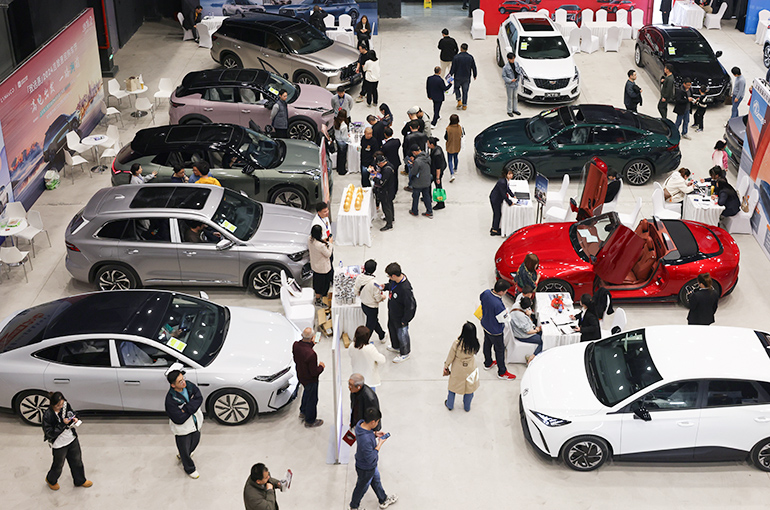 China’s Car Production, Sales Reach New Highs in June on Subsidies, Record Exports
China’s Car Production, Sales Reach New Highs in June on Subsidies, Record Exports(Yicai) July 10 -- China's car production and sales scaled new heights last month, driven by government trade-in subsidies and record vehicle exports.
Passenger car output jumped 13 percent to 2.41 million units last month from a year earlier, according to data released by the China Passenger Car Association on July 8. The previous record of 2.21 million was set in June 2022.
Retail car sales rose more than 10 percent for the fifth time this year, climbing 18 percent to 2.08 million, topping the 1.94 million record also set in June 2022. Wholesale sales increased 15 percent to a record 2.49 million.
The gains come against a backdrop of government subsidies for scrapping older autos with internal combustion engines and older electric vehicles in favour of new EVs, along with record car exports.
China extended its vehicle trade-in subsidy scheme, which has boosted consumer demand for EVs, early this year. Car exports surged 24 percent to 480,000 in June from a year ago, with new energy vehicles accounting for over 41 percent, the CPCA data showed.
The association expects the market to enter an adjustment period this month. As the market’s growth becomes more bifurcated, some companies are staring at excess production capacity for ICE vehicles, leading to pressure to cut inventory amid shrinking demand.
Inventories stood at 3.45 million as of May 30, equivalent to 57 days of sales, with both ICE vehicles and NEVs under destocking pressure.
In the first half of the year, retail car sales gained 11 percent to 10.9 million from the same period of last year, while wholesale sales rose 12 percent to 13.28 million, per the CPCA’s figures. Production climbed 14 percent to 12.25 million.
First-half exports inched up 6.8 percent to 2.48 million, with ICE vehicle exports falling 13 percent to 1.29 million and NEV exports more than doubling to 810,000.
Summer Sales Strength
The traditionally slower summer sales season has become less subdued in recent years, with retail sales in July averaging 6.9 percent of the annual totals for 2014 through 2019. It rose to 8.4 percent between 2020 and last year, indicating that the Chinese market is adopting characteristics similar to Europe and the United States, which are more mature.
The narrowing interest rate spread between bank deposits and loans is also impacting the industry. High-interest, high-rebate car loan policies are being controlled, increasing the strain on dealership earnings. With efforts to reduce excessive competition being stepped up, carmakers are working to maintain price stability and are being more prudent over production schedules.
US President Donald Trump's "One Big Beautiful Bill" will promote ICE vehicle usage and oil drilling, CPCA Secretary-General Cui Dongshu noted. As the world's largest single market, the United States greatly influences global automakers’ strategies, he added.
China has huge advantages in NEV development, including plug-in hybrids, which clearly outperform fuel vehicles, Cui pointed out.
China’s approach to NEV development is entirely correct, allowing domestic brands to compete internationally with more fuel-efficient, better-performing, and intelligent NEVs versus ICE car technologies, Cui noted.
Under the influence of US policies, Chinese automakers are expected to crank up their exports to overseas markets in the coming years., with larger opportunities in international markets, he said.
Editor: Futura Costaglione